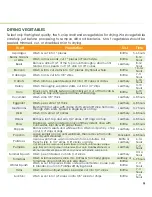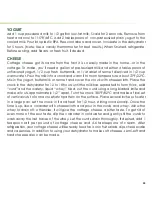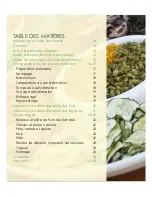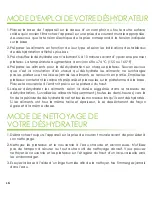
6
BLaNChiNg
(or CheCKiNg)
this method is most effective on tough-skinned fruits (sometimes having natural protective
wax coating) such as grapes, plums, cranberries, etc. By boiling fruits in water for 1 to 2
minutes, the skin “cracks” and allows the moisture to more readily escape, thus the drying
time is faster.
Water Blanch:
Bring a pot of water to a boil and stir the food directly into the boiling water.
Cover and blanch for approximately 3 minutes. Remove food from the boiling water and
place it into ice water to cool. Blot with a towel to remove excess water before drying.
steam Blanching:
Using a pan-type steamer, fill the lower portion with 2 inches of water.
Fill upper section with food. Let the water rapidly boil approximately four minutes. Remove
food and place it into ice water to cool. Blot with a towel to remove excess water before
drying.
electric steamers:
electric steamers are perhaps the best means for blanching. Follow the
set guidelines provided in your electric steamer’s operating manual for blanching fruits
and vegetables.
temperatUre
Before loading the first tray, preheat the dehydrator by turning it on for 5-10 minutes.
time
Drying times vary depending on multiple factors. these factors include the amount of
humidity in the air, the moisture content of the food being dried and the method of
preparation. Halfway through the dehydration process, we suggest rotating the trays for
even dehydration.
humidity:
Check with your local weather service to determine the day’s humidity level.
the closer the humidity is to 100%, the longer it will take for your food to dry.
moisture Content:
Water content of a fruit or vegetable can vary due to growing season,
rainfall and environmental factors, as well as the ripeness of the food. the more water,
the longer the drying time.
slicing:
Uniform, thin food slicing not more than 1/4” thick, spread evenly in a single layer
on the drying trays.
DRYInG BAsICs







































